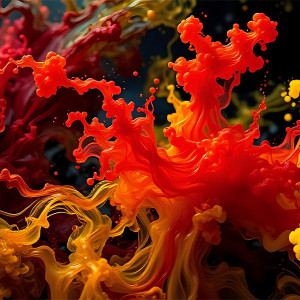
Stock photography has fundamentally changed in recent years. With the emergence of new technologies, particularly artificial intelligence (AI), we are experiencing a revolution in how images are created, selected, and marketed. These developments have significant implications for photographers, businesses, and buyers of stock photos.
Artificial Intelligence in Image Production - More and more companies are using AI tools to automate the image creation process. AI can not only manipulate photos but also generate completely new images. For example, it can analyze existing images and learn from them to produce creative variations. This opens up new opportunities for photographers to expand their portfolios and realize creative ideas.
Image Selection and Optimization
Another notable area where AI plays a role is in image selection. AI-powered algorithms can analyze user data and predict which images are most likely to be purchased or shared. This knowledge enables better optimization of image databases and helps photographers present their work more effectively.
The capabilities of AI in image selection not only provide photographers with valuable insights into market trends but also allow them to address the specific needs of their target audience. By analyzing user behavior, click-through rates, and engagement metrics, AI can help identify the most popular image styles and motifs.
Moreover, the automation of the selection process can save photographers significant time, as they spend less time searching for suitable images. Instead, they can focus on the creative aspects of their work and develop innovative concepts that meet the ever-changing demands of the market. With the support of AI tools, photographers can strategically expand their portfolios and help their images stand out in an overcrowded market.
Impact on the Industry
The integration of AI into stock photography has both positive and negative effects. On the positive side, photographers can benefit from automated editing processes that save time and enhance creativity. On the other hand, traditional photographers may find themselves under pressure due to the increasing number of AI-generated images. Their unique creative abilities and individual style are difficult to replicate, yet competition from automated tools is rising.
The Human Factor Remains Critical
Despite advances in technology, the human factor remains crucial. Emotions and human experiences are challenging to replicate with AI. The ability to convey authentic emotions and tell stories remains a hallmark of human photographers. Clients often seek images that tell a story or evoke a specific emotional state—something that AI can only partly achieve.
Conclusion
The future of stock photography will likely be a hybrid form that combines human creativity with AI-driven processes. The challenge lies in leveraging the benefits of AI while preserving the unique creative messages of photographers. Photographers who adapt and embrace new technologies will be able to optimize their work and continue to hold an important place in this dynamic industry.







Leave a Comment